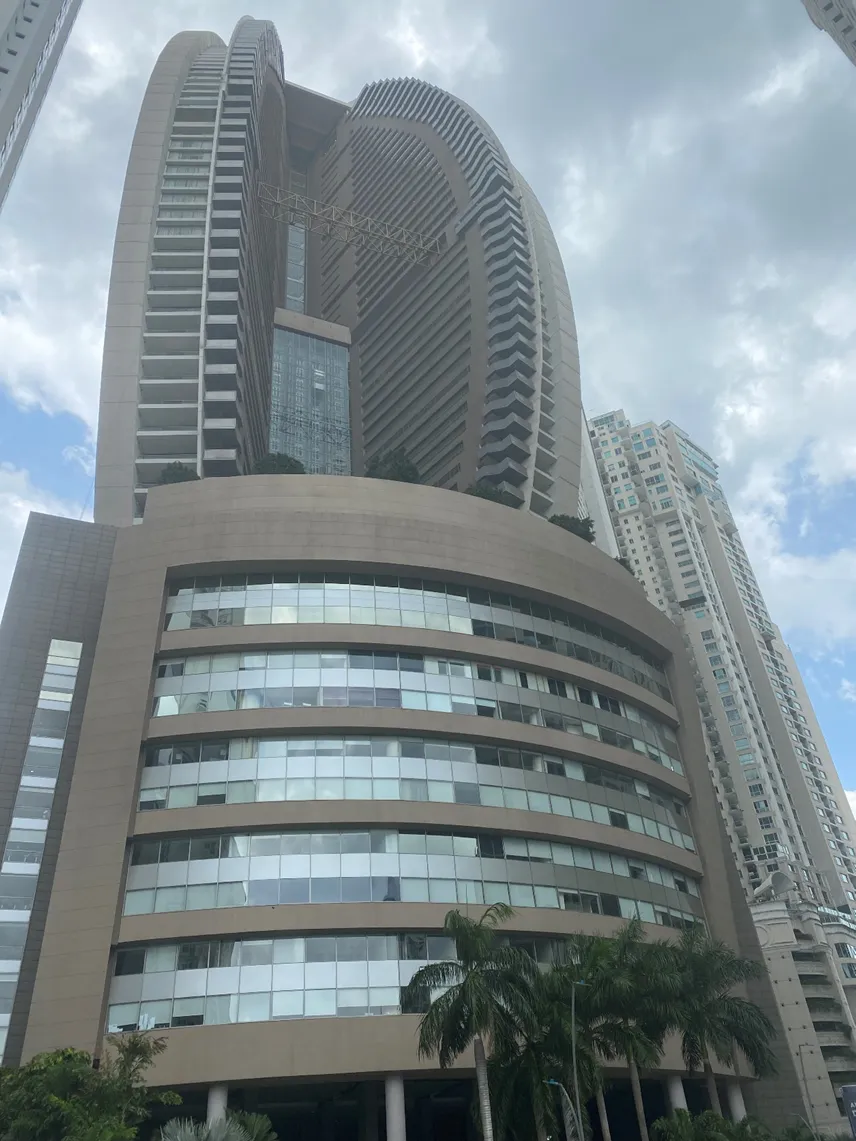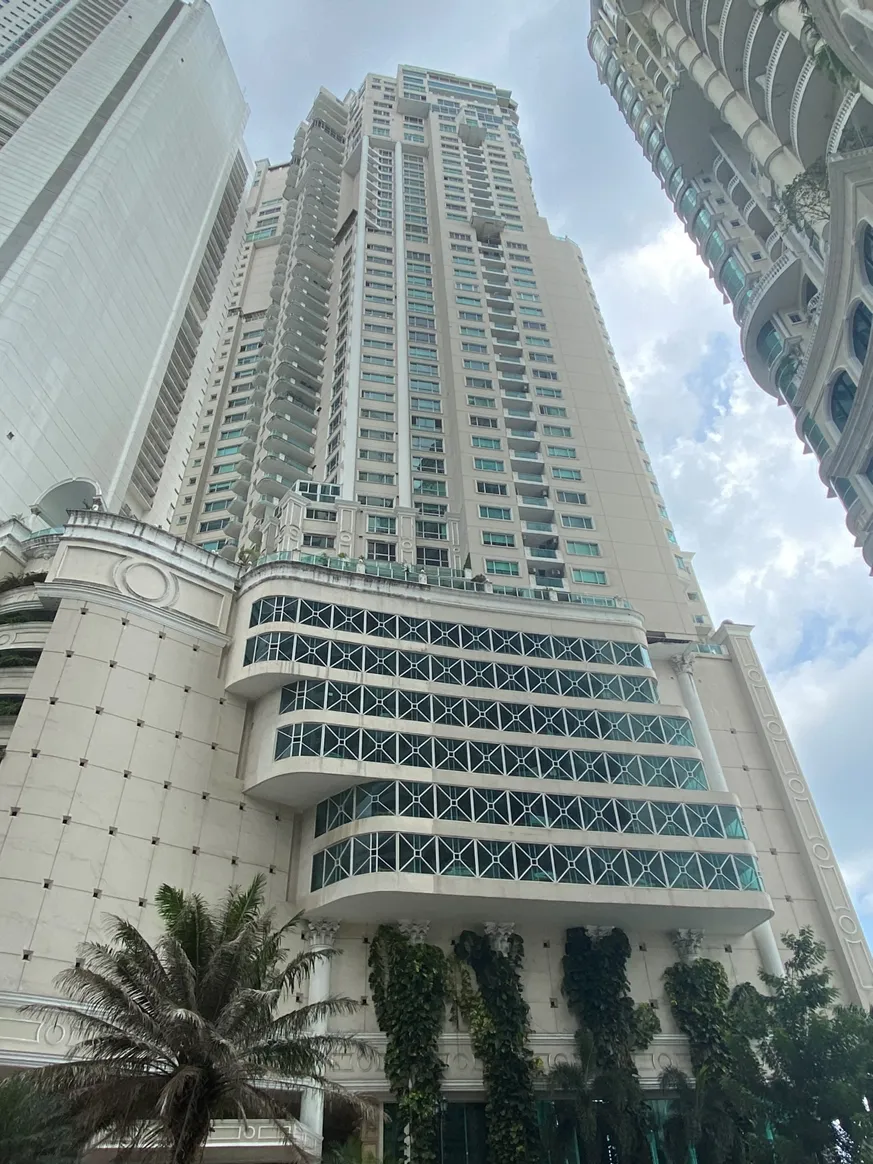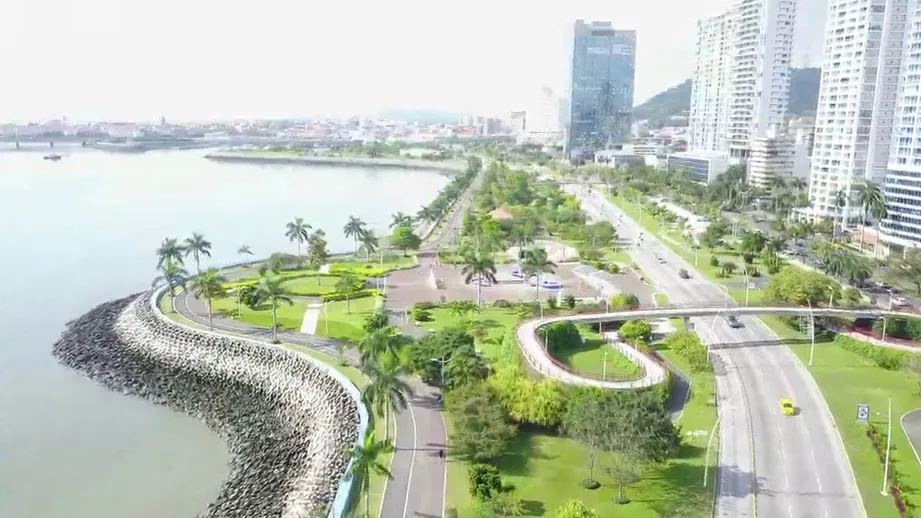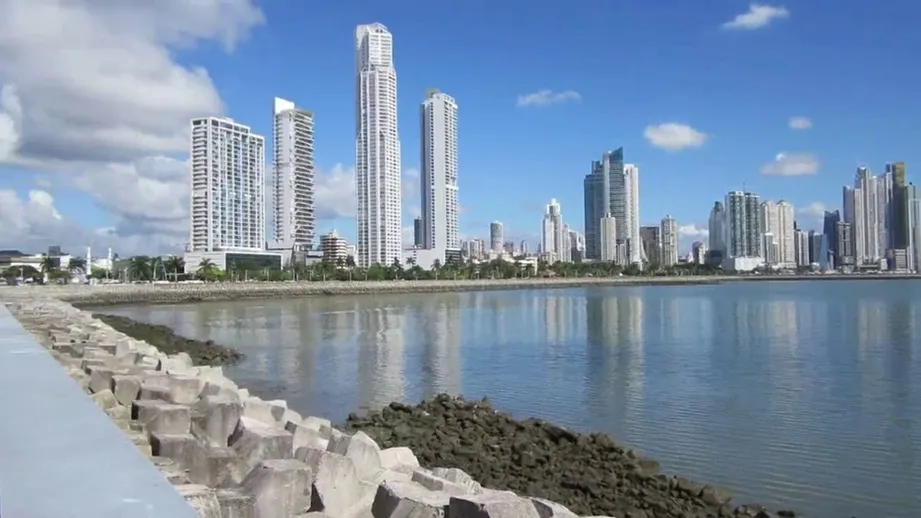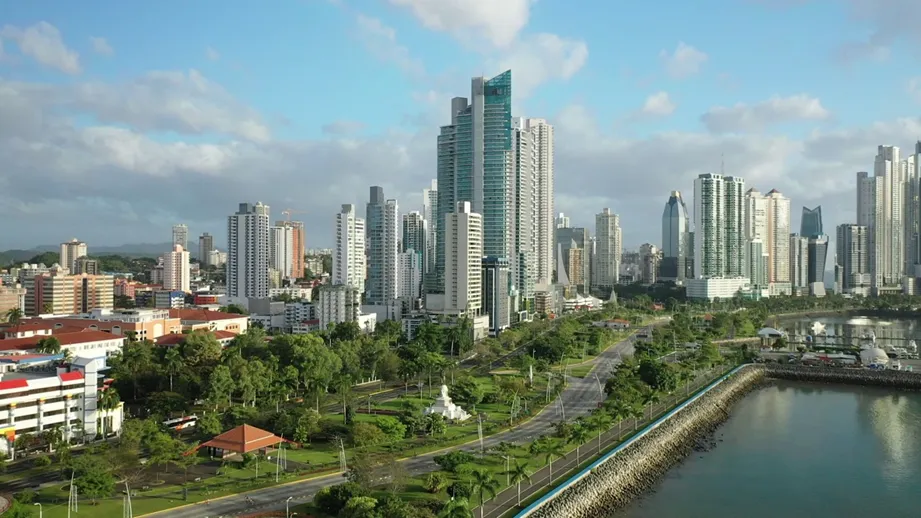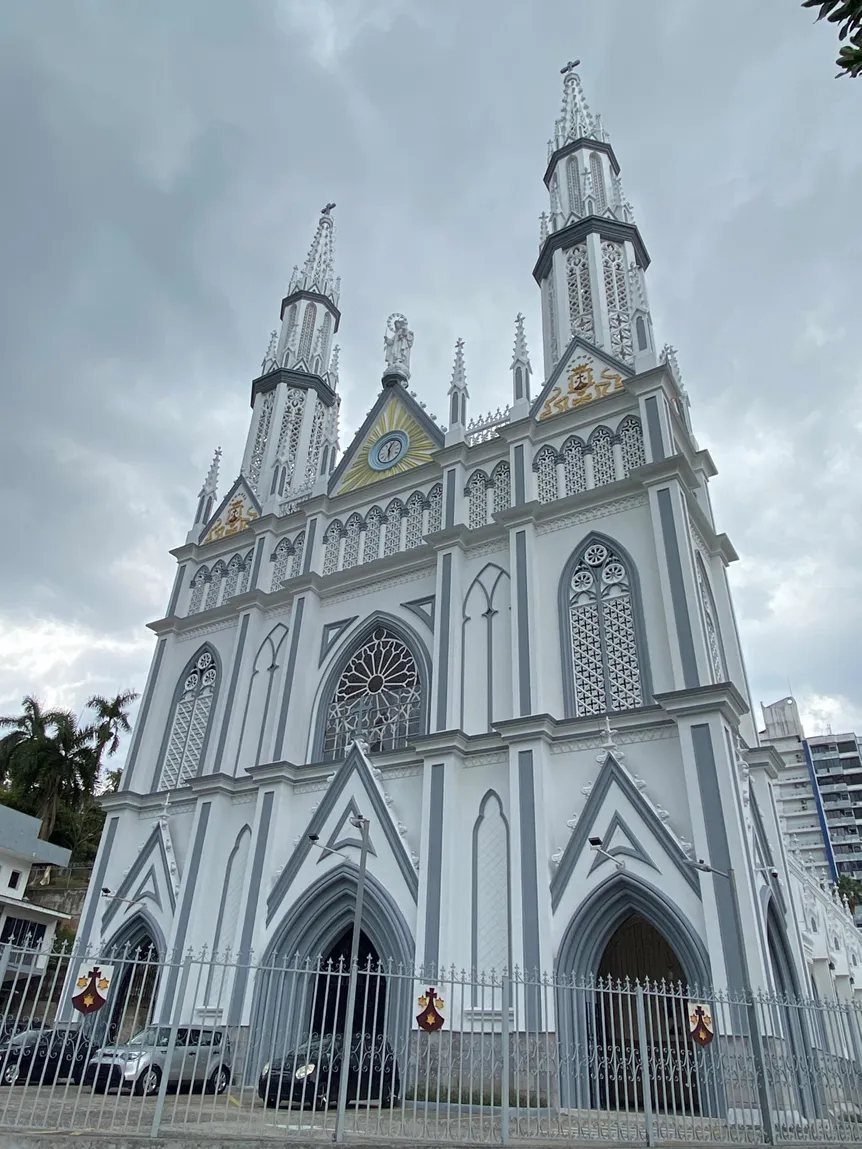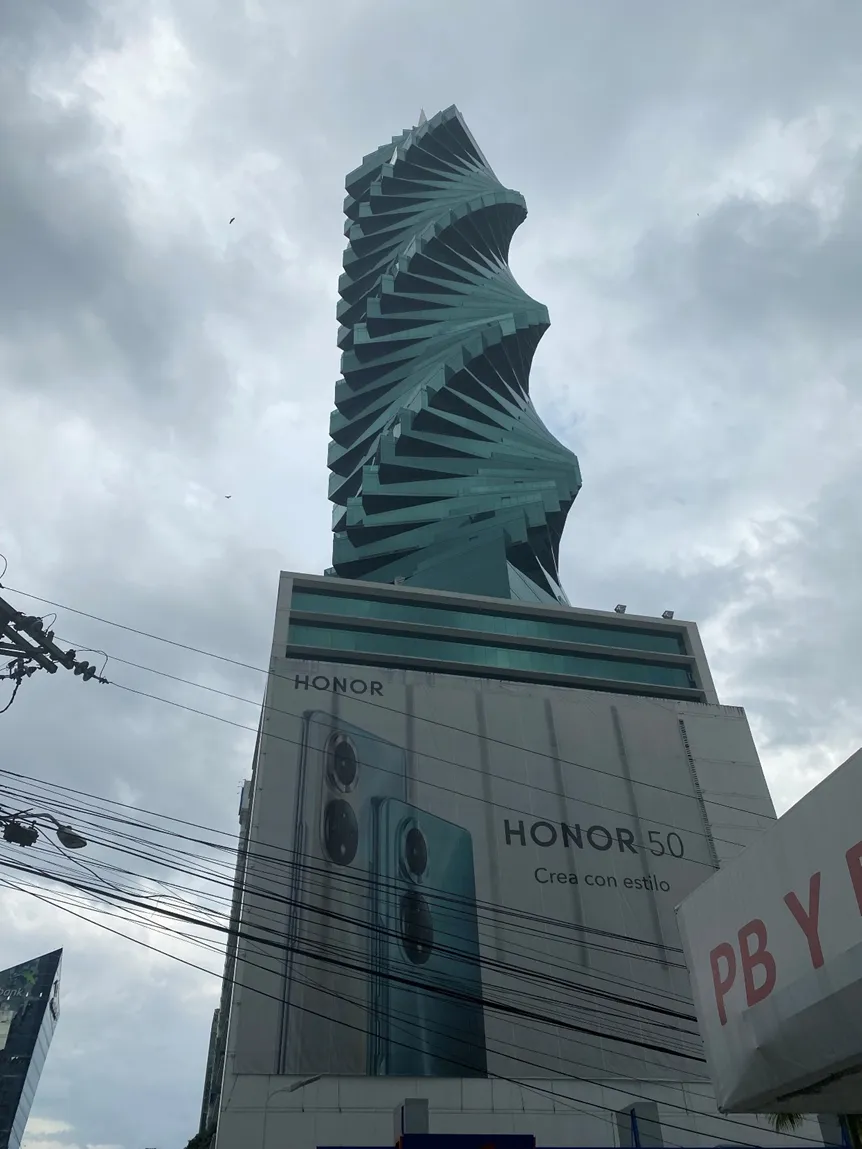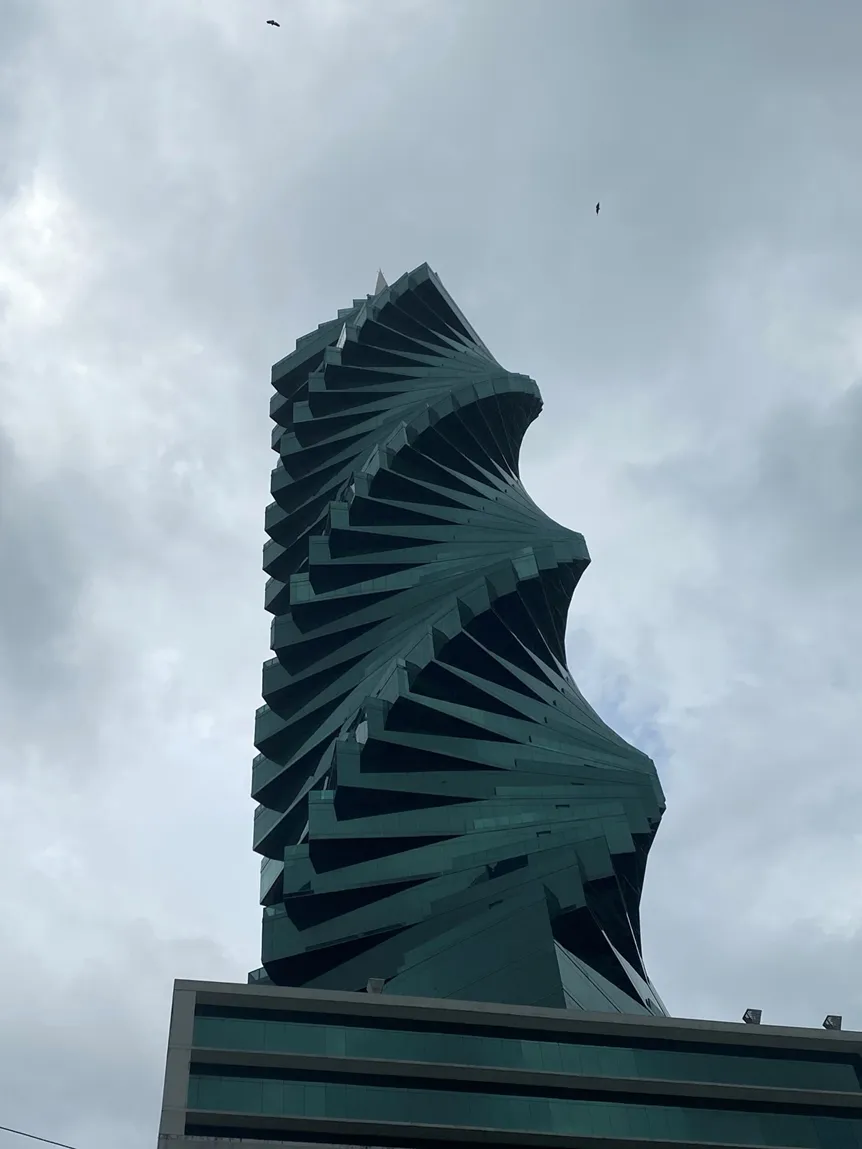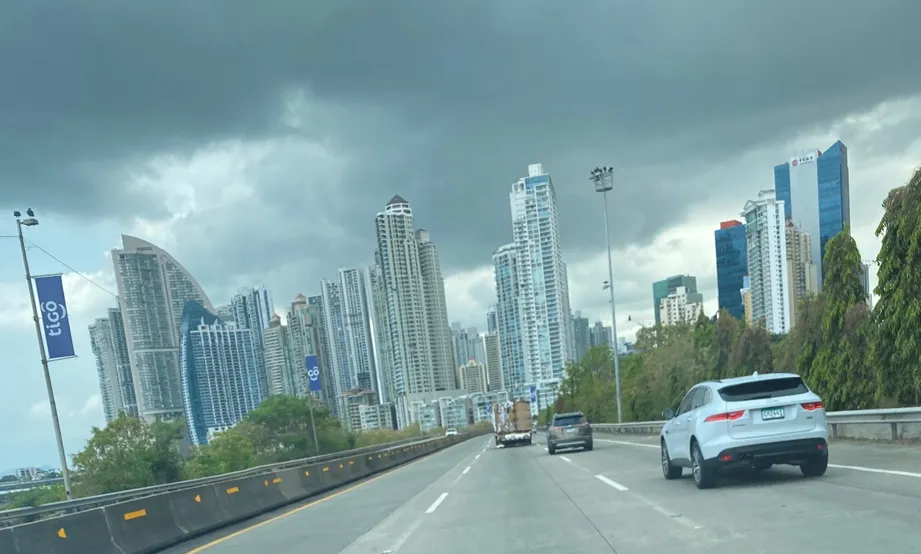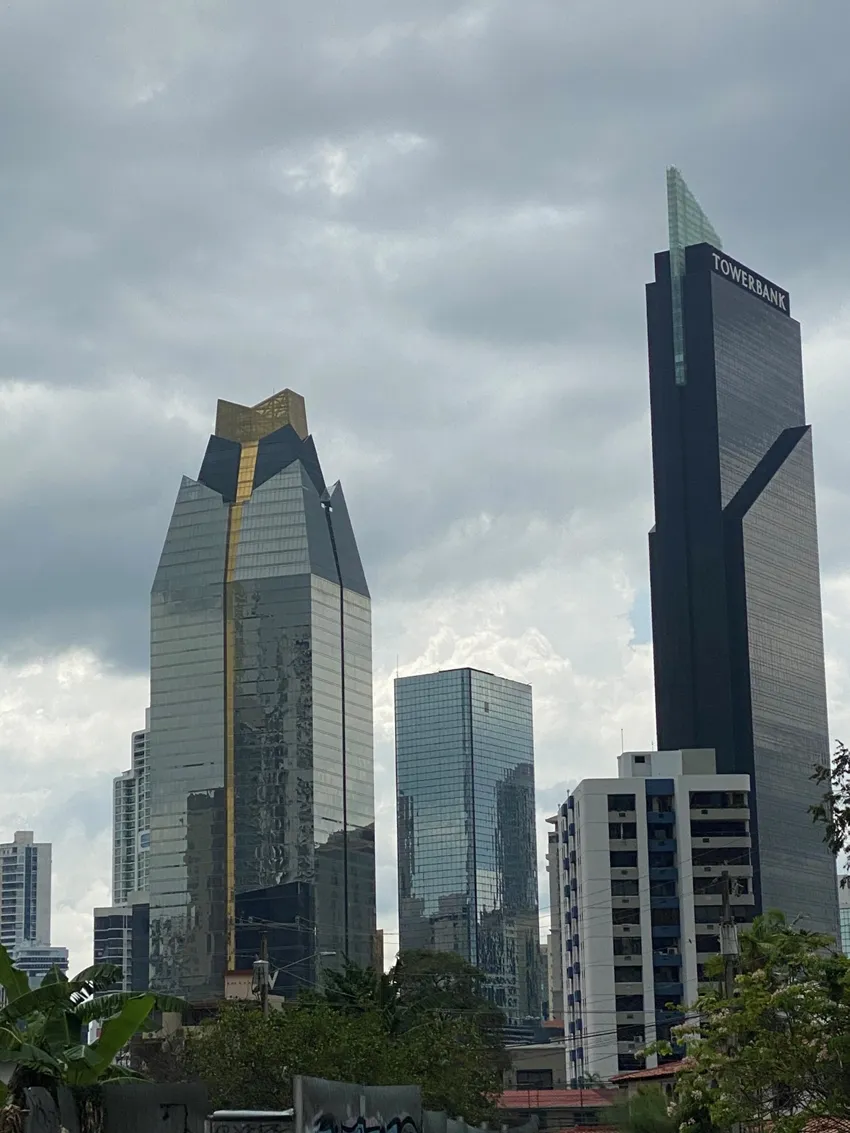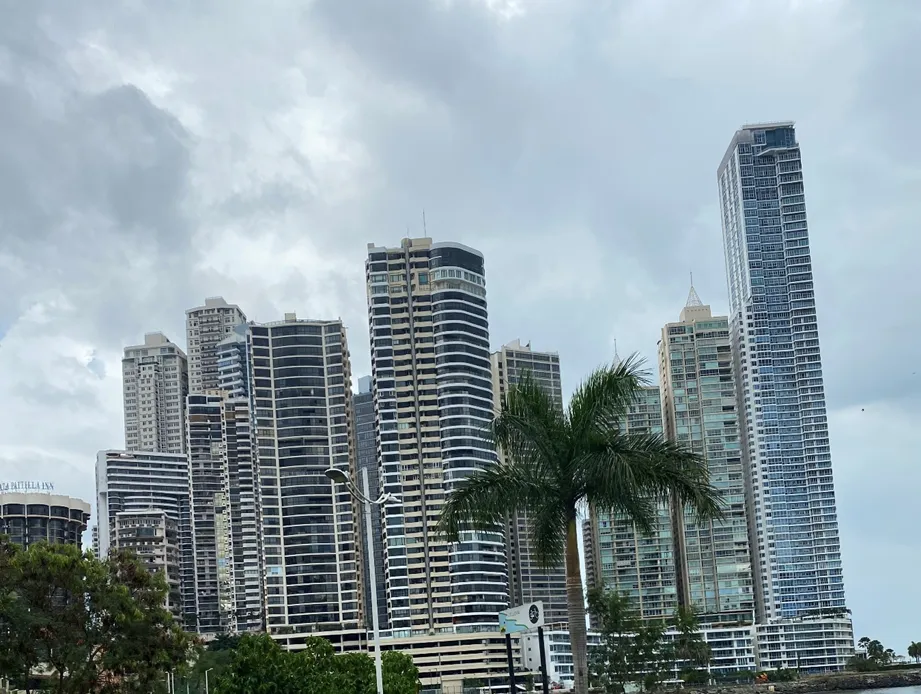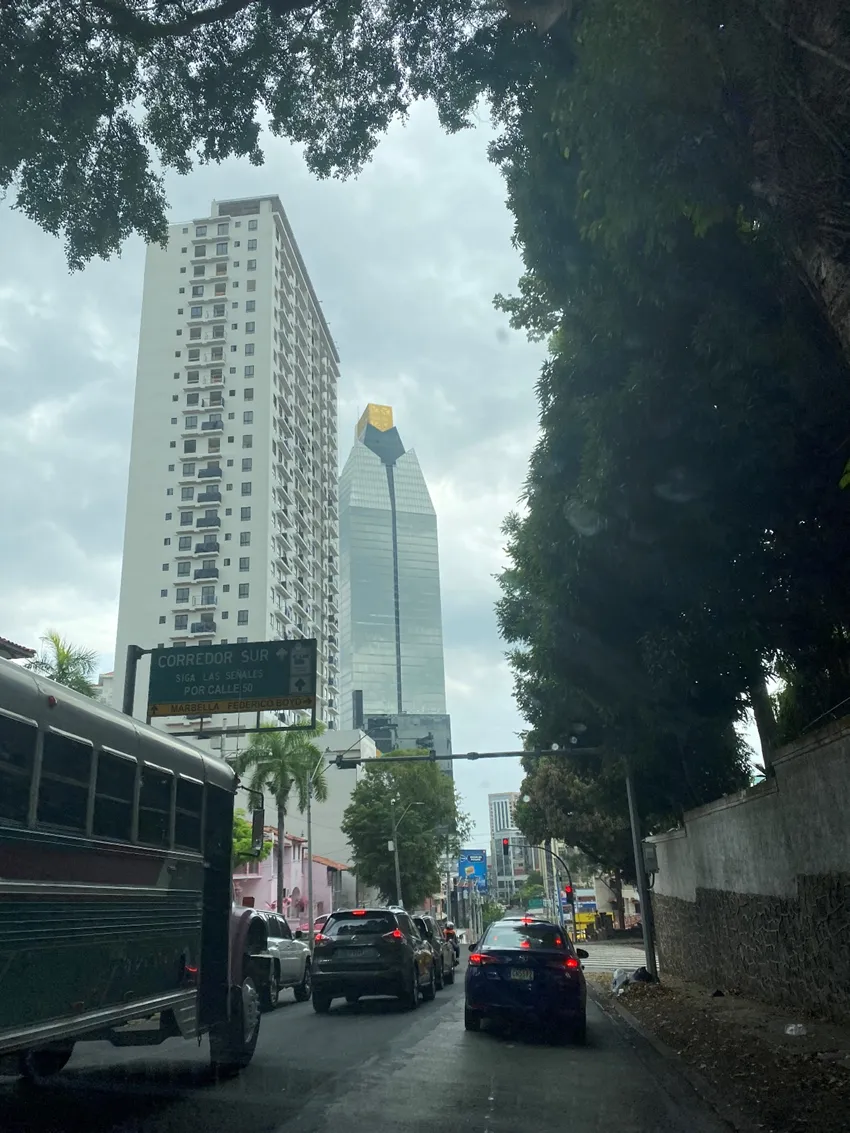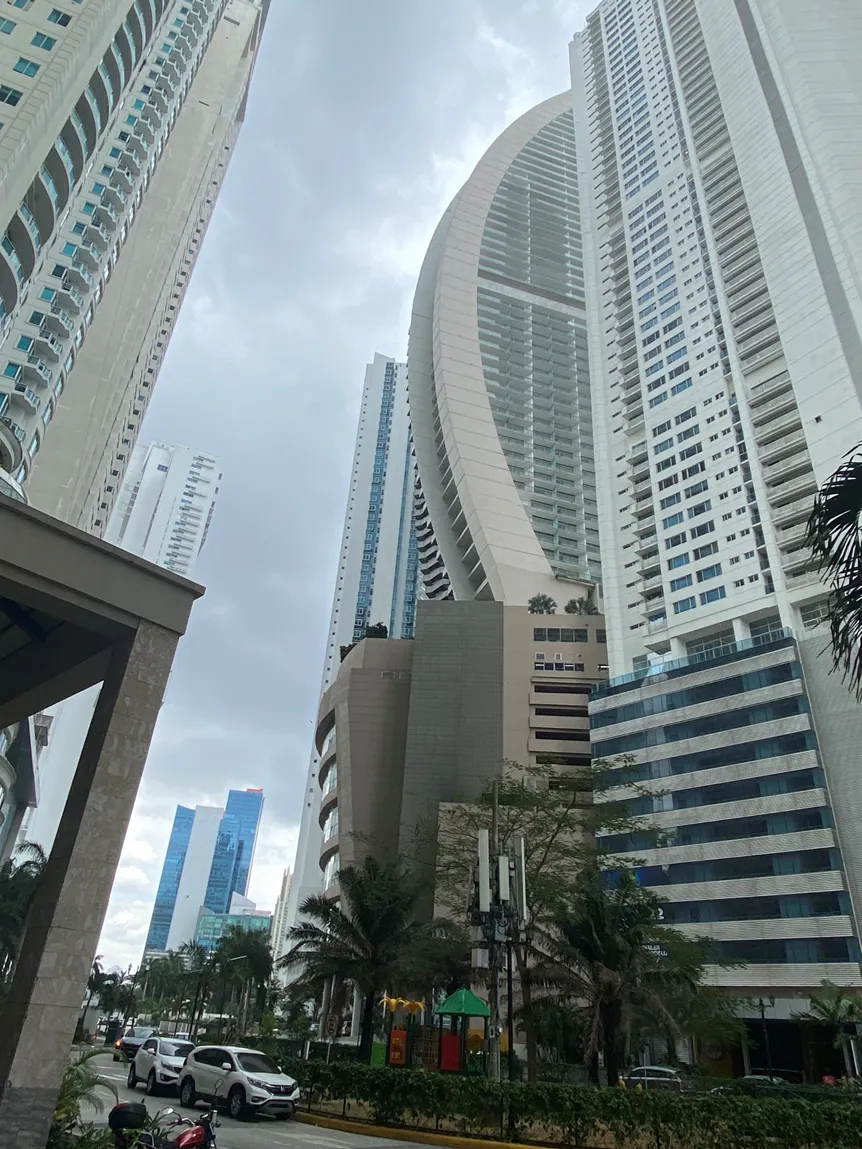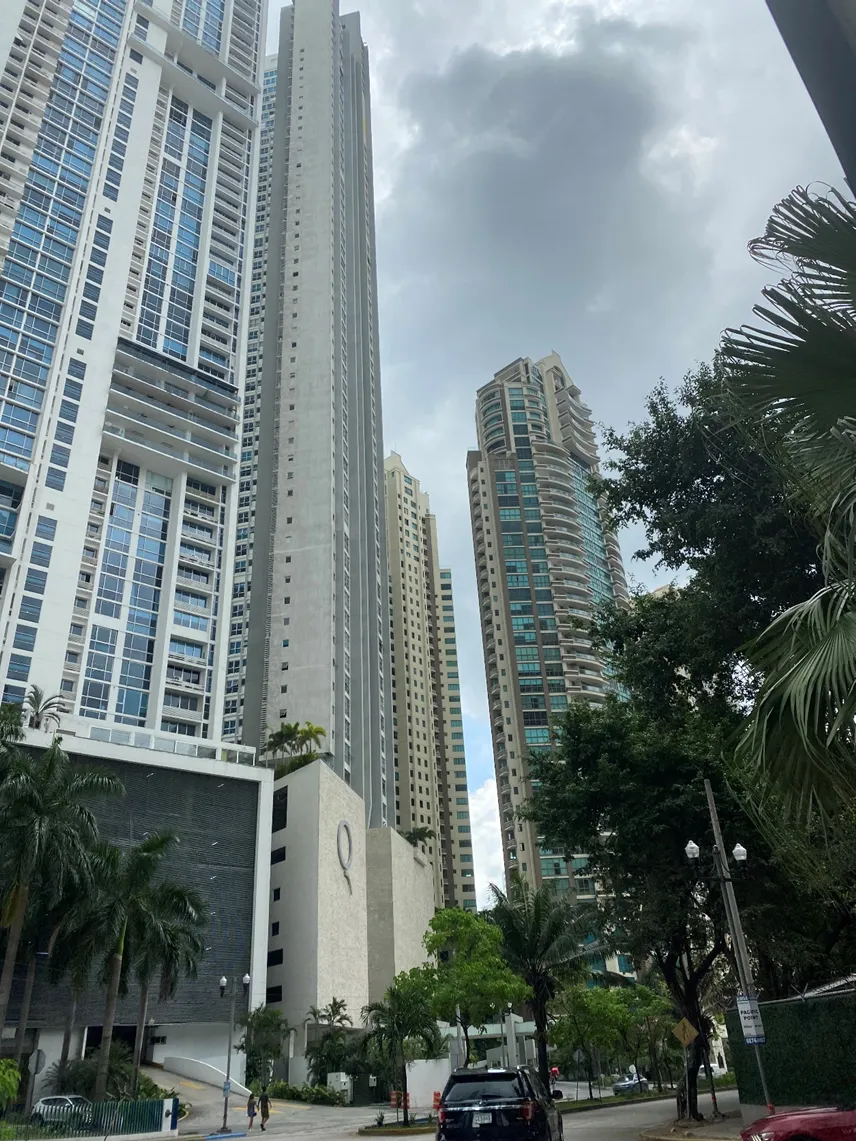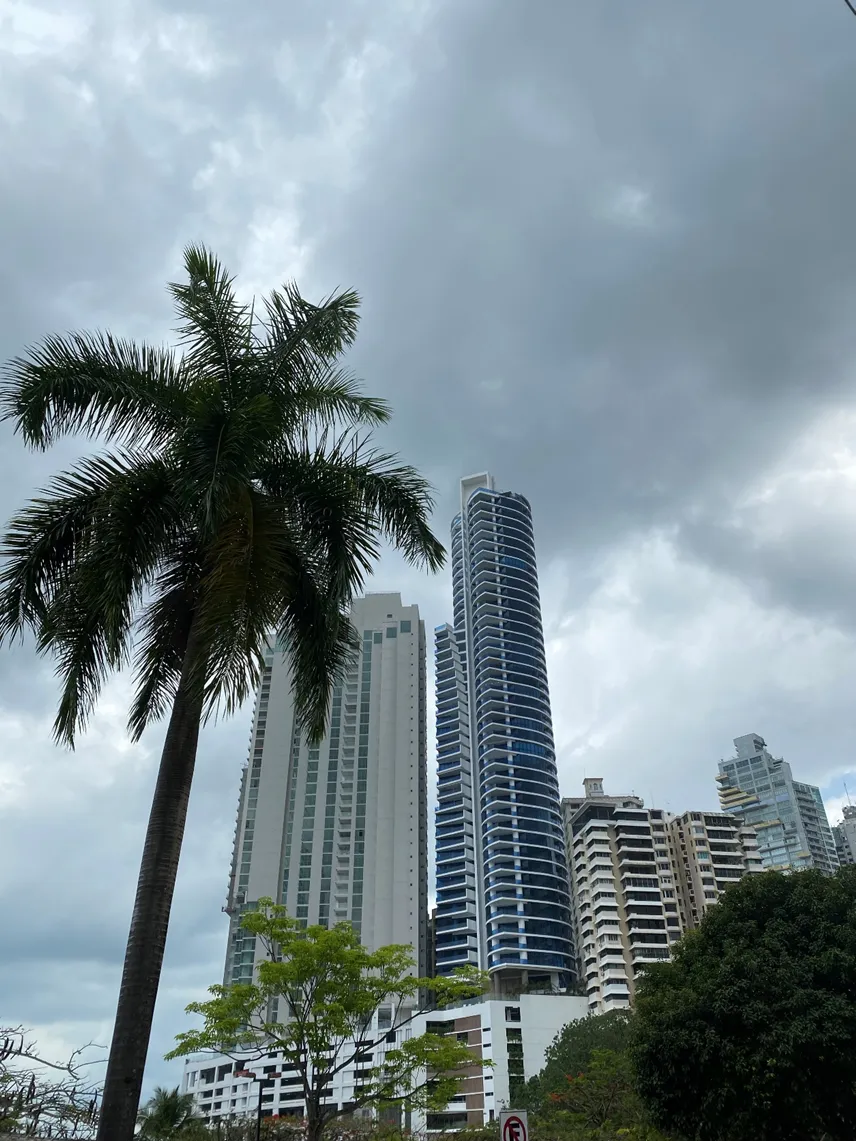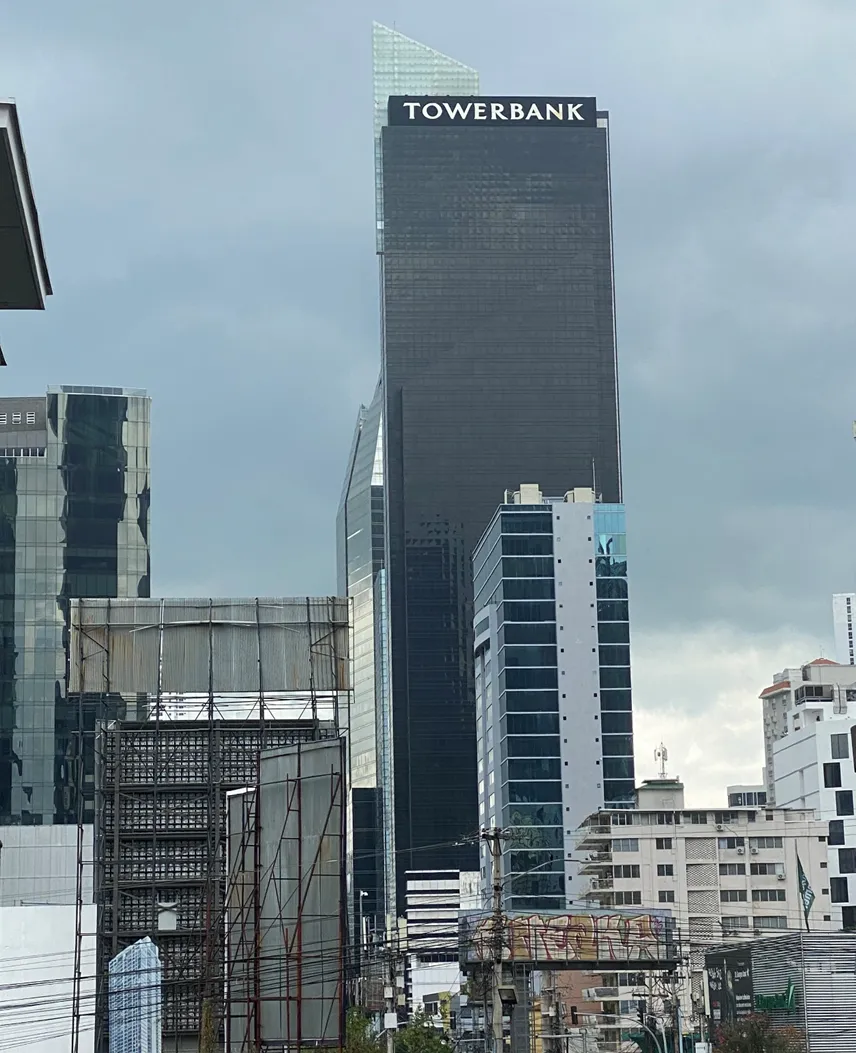
In a previous post I wrote about the colonial part of Panama City, I indicated that there were three cities in one in this Central American metropolis. Today I will dedicate myself to giving you photographs of the thriving, modern, and cosmopolitan city of Panama. On this occasion, my dear friends, Arelis Romero and her husband Alex, who are two successful Venezuelan professionals who live in Panama, lent themselves to take photos of the modern city in order to nurture this post that I deliver to you with all the respect and admiration of forever.
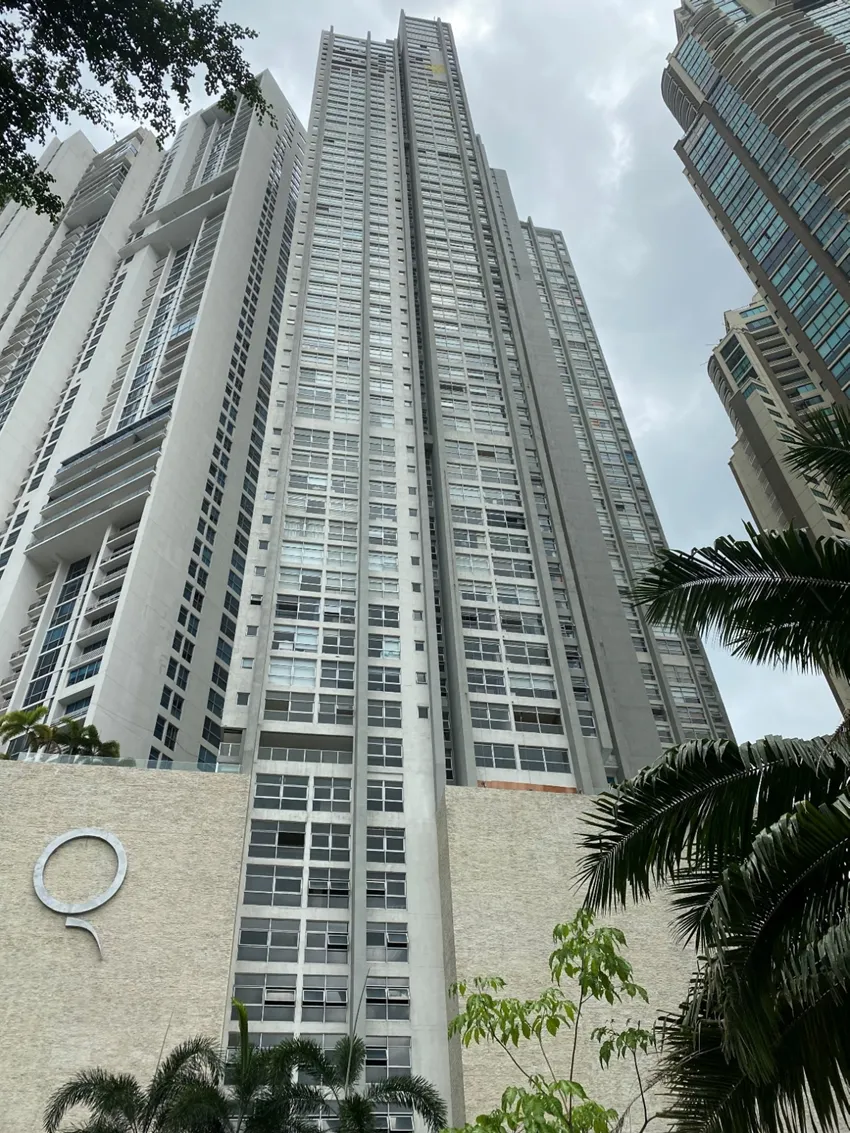
de 226 mts. Utiliza un diseño constructivo en forma de zigzag para aprovechar los espacios)
The architecture of Panama is linked to the phrase that identifies the country: "Panama, melting pot." Like many of the Latin American cities, Panama is the confluence of a beautiful mixture of rich and different cultures such as indigenous, Spanish, Asian, American, and African, which left their mark on the Panamanian man of today, and they marked the way in which cities and buildings have been constructed and, therefore, signify the evolution that architecture has undergone in these cities.
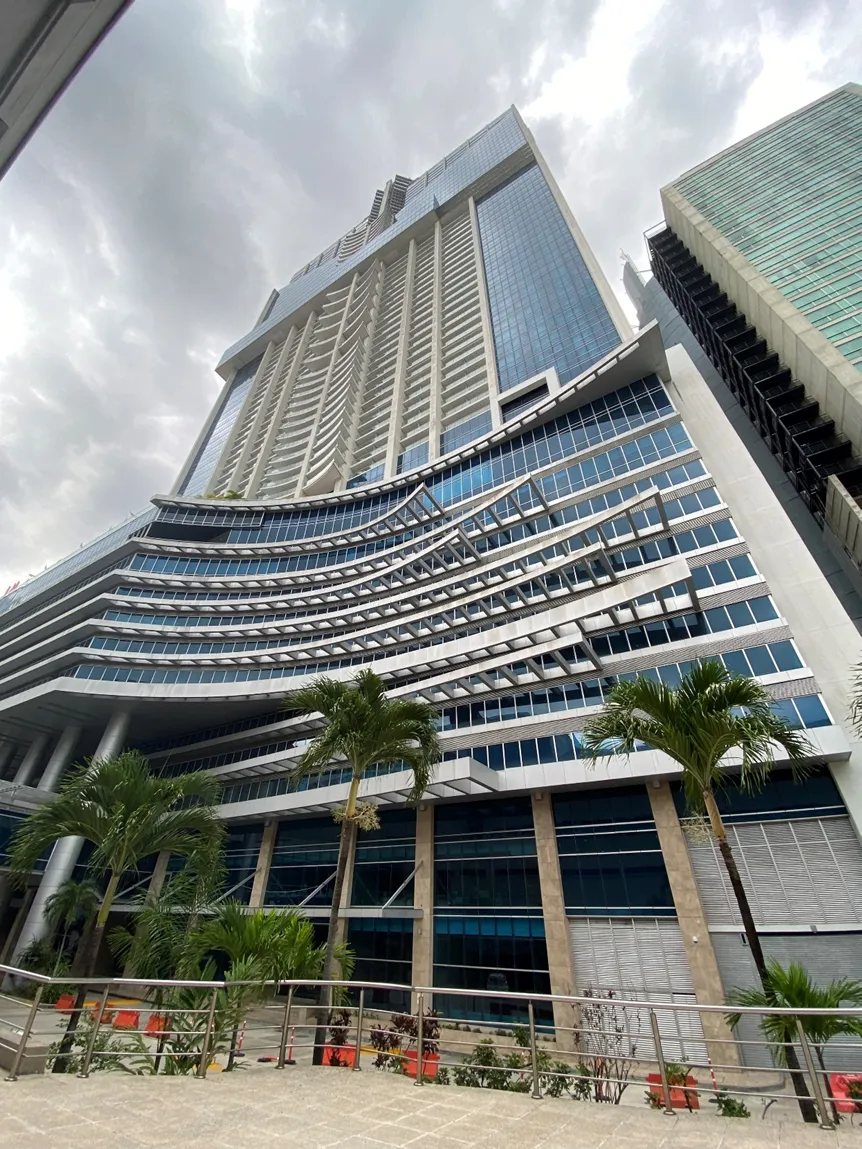
This "third city" is located in the beautiful bay of Panama City, characterized by the commercial boom and the development of very modern and spectacular infrastructures, where a typical Caribbean nightlife takes place, with magnificent restaurants, luxury residential areas, and the unique tropical forest, called “Parque Natural Metropolitano”, a tropical jungle in the middle of the city. This section of the city is a particular combination of the modern with the international and the Latin.
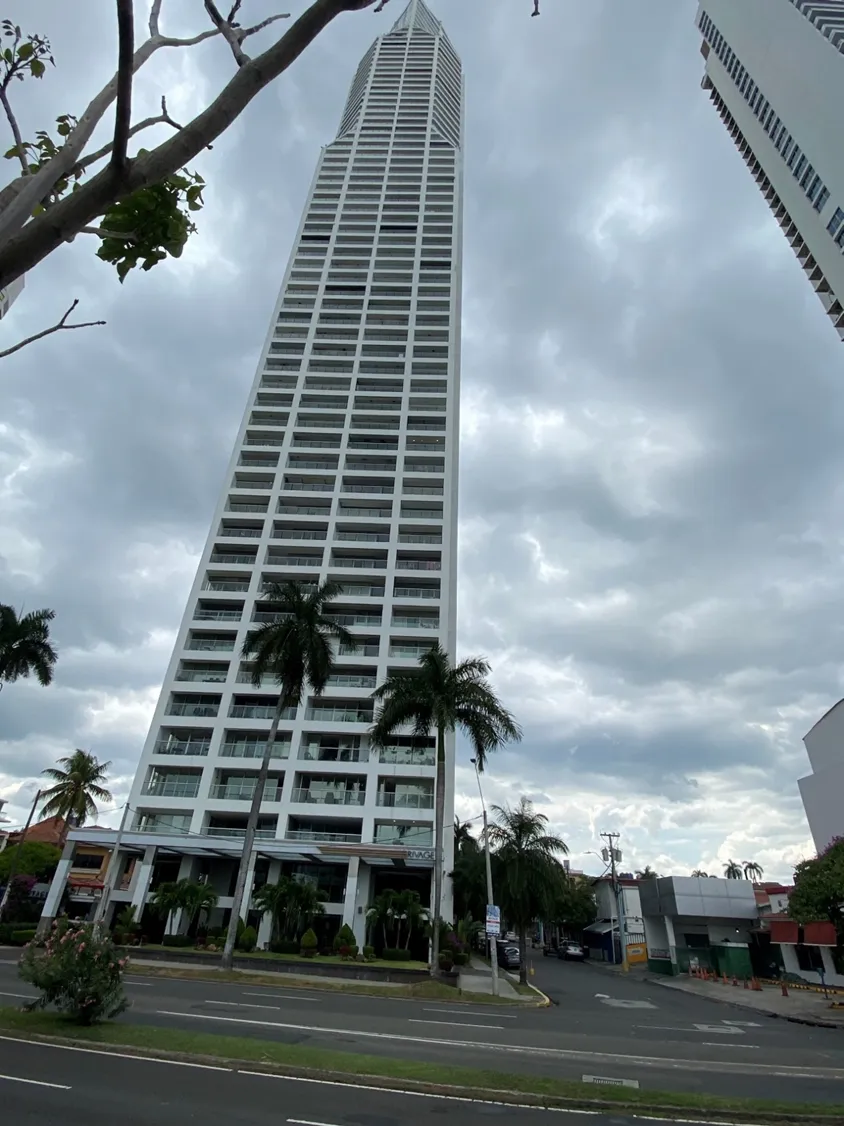
The commercial development of Panama, with the only canal that joins two oceans and serves as maritime traffic for ships from much of the world, has served to make La Bahía a center of attention for large international companies in order to build a zone conducive to facilitating business in the region.

At first glance, it is impossible to calculate the number of skyscrapers that rise gracefully in the so-called modern Panama. The unsuspecting visitor did not imagine that in Central America they would find a city that seemed more like the Middle East. A sample of what they have built in modern Panama is represented by some tinted glass skyscrapers, something that for many connoisseurs of architecture is a "contradiction" in a country with average temperatures of around 30 degrees Celsius and humidity levels of 80 % typical of a tropical climate, so it is imperative to use air conditioning in these kinds of structures.

At the beginning of this century, high-rise buildings began to be built. In 2011, the construction of the Trump Ocean Club International Hotel & Tower was completed, with 284 m and 70 floors, renamed "Bahia Gran Panamá", which is, until now, the tallest building in the country, with its sailboat shape, or the F&F tower that has the shape of a screw, the Vitri Tower of 275 meters for residential use, the Star Bay Tower with 267 meters, The Point building with 266 meters and the Towerbank Financial Center, an office building with 255 meters. All these modern structures are currently built under the highest standards of earthquake resistance and materials such as reinforced concrete, aluminum, tinted glass, and steel.
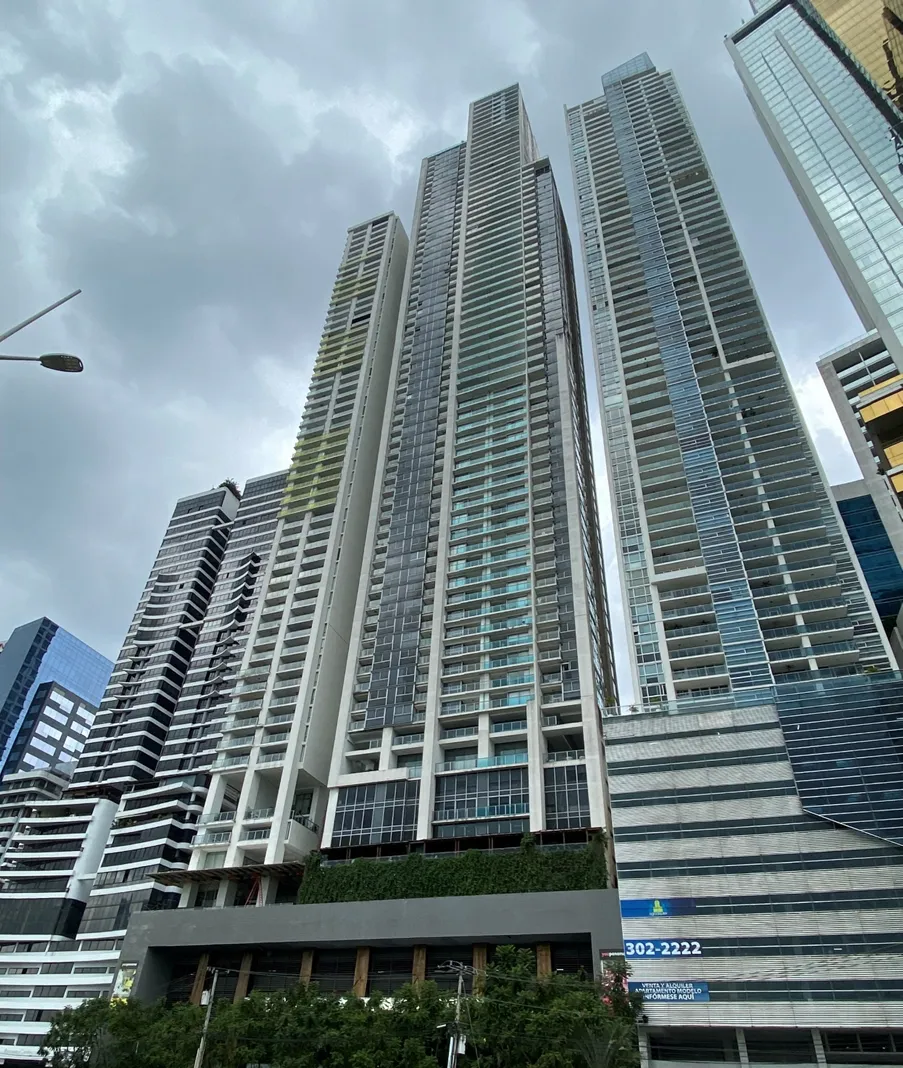
However, next to these buildings that literally "scratch the skies", we find other types of constructions, representative of various currents of architecture, such as the Iglesia Nuestra Señora del Carmen, a religious architecture of fine and beautiful finishes. In addition, if you want to see other very different structures, the old or colonial city is very close, where there are many small buildings that use cross-ventilation and thus take advantage of the air currents that exist in the area, in addition to the number of balconies in family homes, government buildings, small hotels, and businesses.

To appreciate all this part of the city, there is no better way than "La Cinta Costera", a huge public space of 25 hectares of land facing the sea, whose construction began in 2007 by Panamanian architects and landscapers Boris Aguilar and Alberto Arosemena.
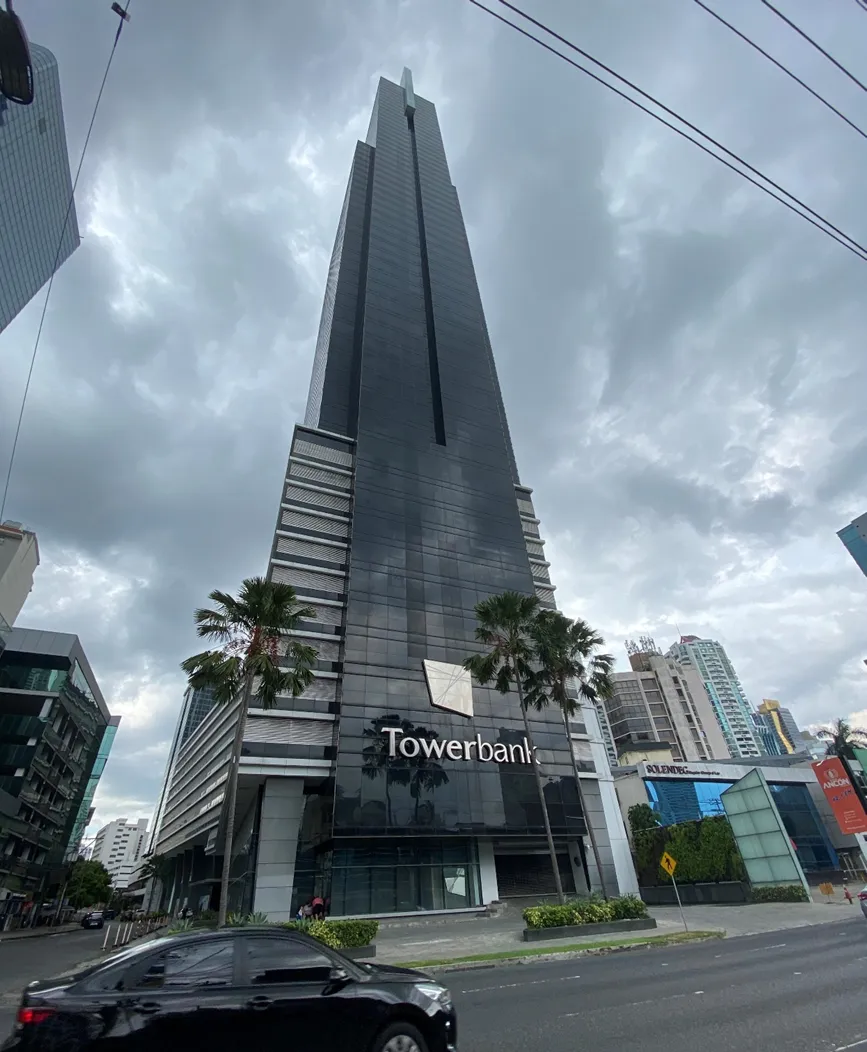
To finish, I would like to point out that the incredible Museum of Biodiversity is another avant-garde architectural work, located in this part of the city, with an interesting aesthetic, which we will present soon in a separate post.
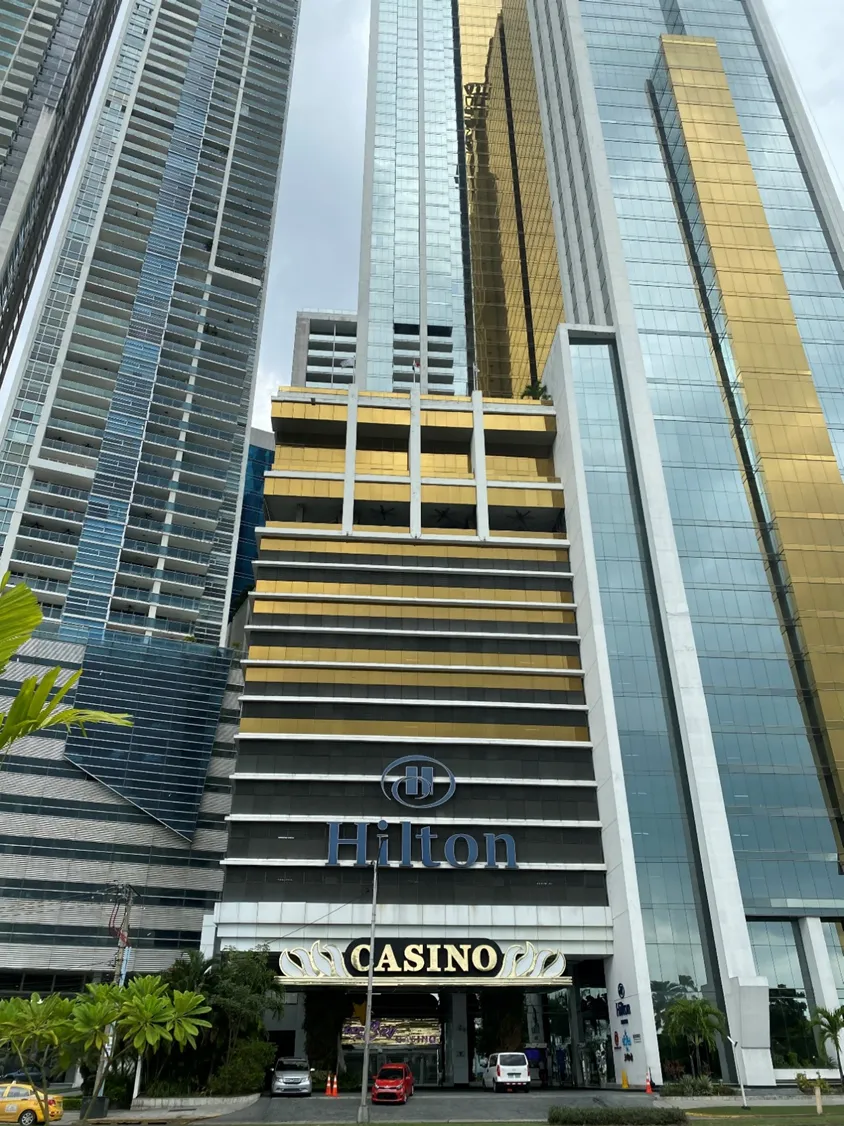
Bibliography consulted:
*https://www.efe.com/efe/america/cultura/la-contradictoria-arquitectura-moderna-de-panama/20000009-4242533
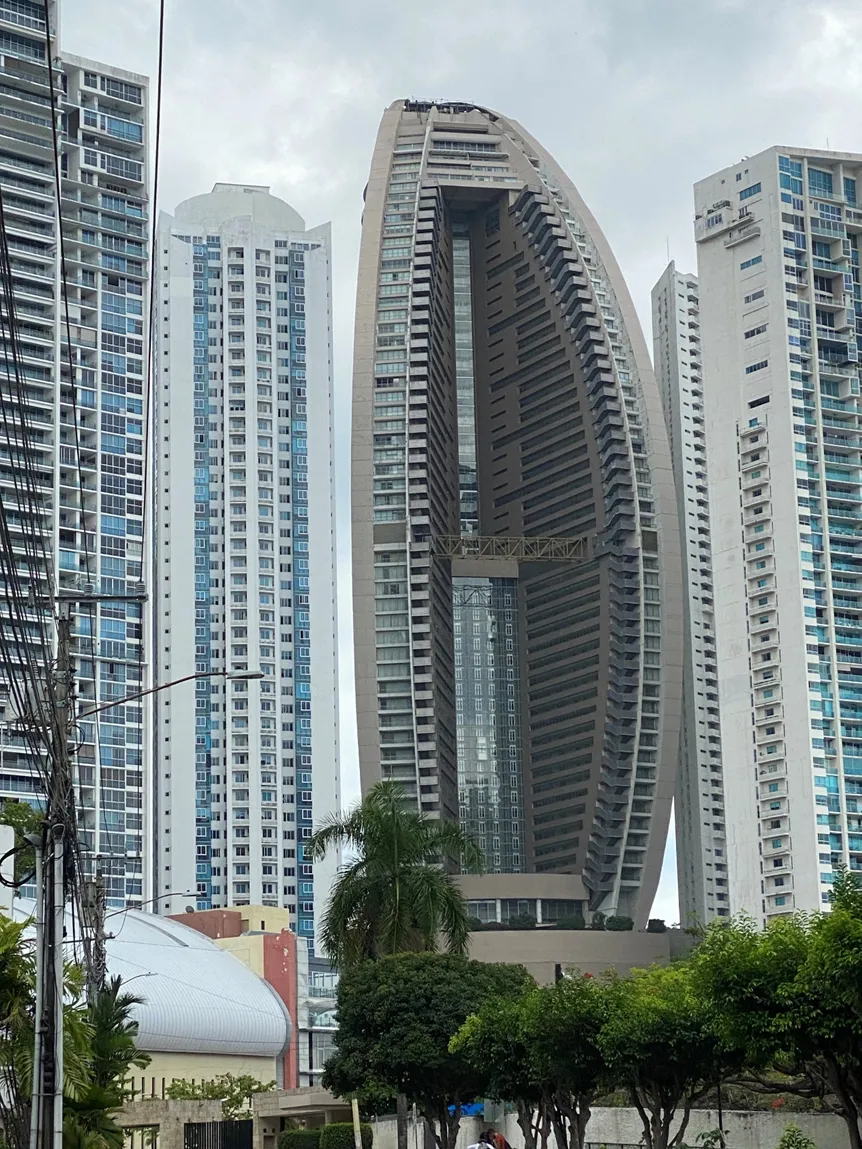
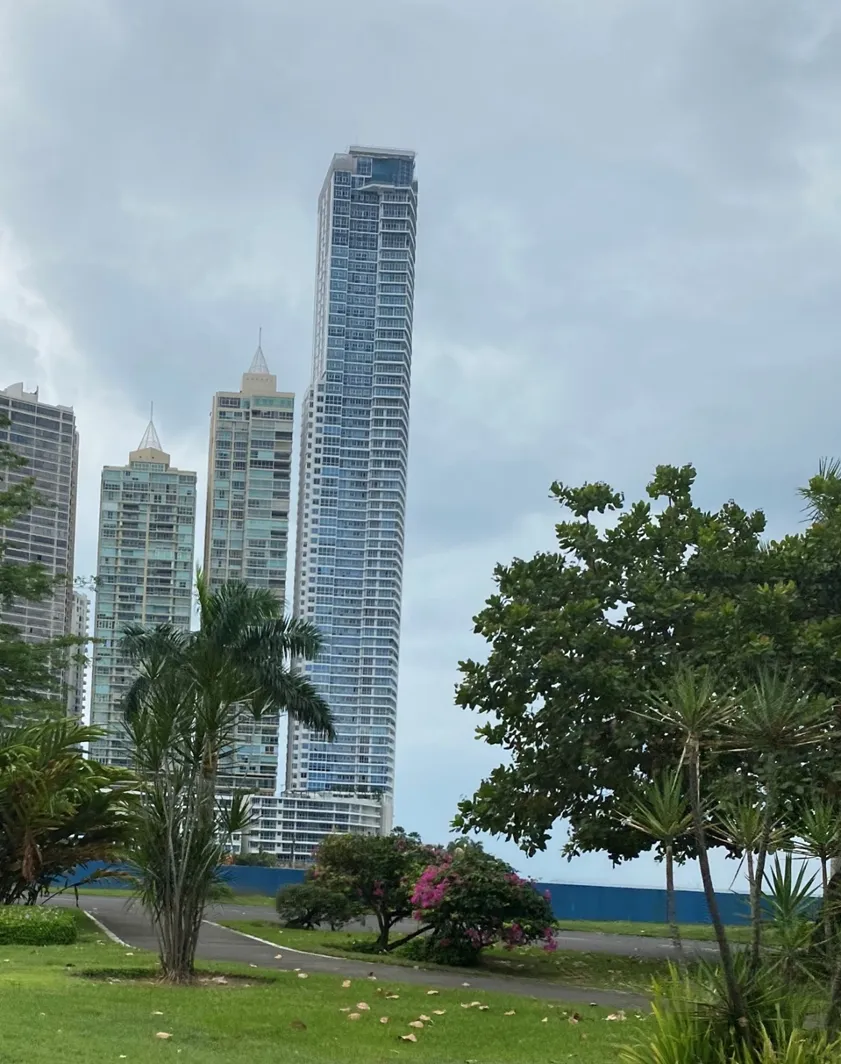
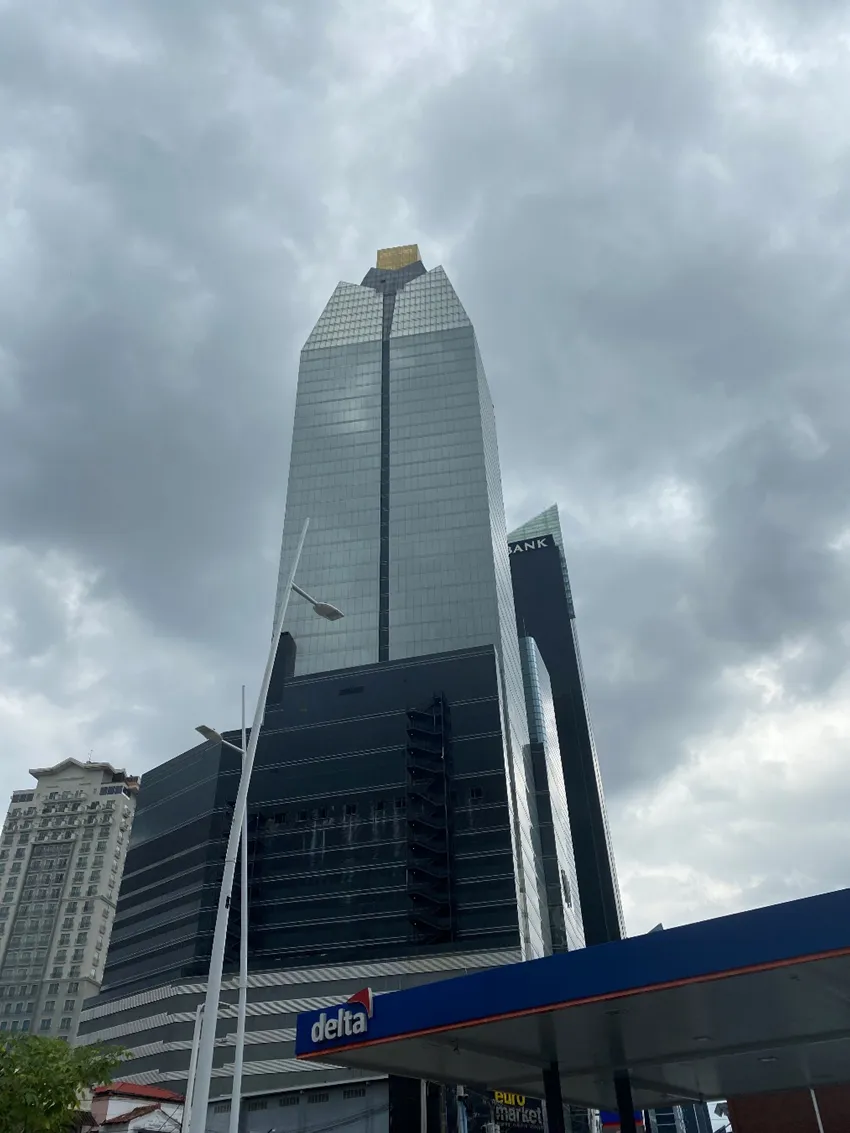
En un post anterior que escribí sobre la parte colonial de la Ciudad de Panamá, indicaba que había tres ciudades en una en esta metrópoli centroamericana. Hoy me dedicaré a hacerles entrega de fotografías de la pujante, moderna y cosmopolita ciudad de Panamá. En esta oportunidad mis amigos entrañables, Arelis Romero y su esposo Alex, quienes son dos exitosos profesionales venezolanos que viven en Panamá, se prestaron para tomar fotos de la ciudad moderna a fin de nutrir este post que les entrego con todo el cariño y admiración de siempre.
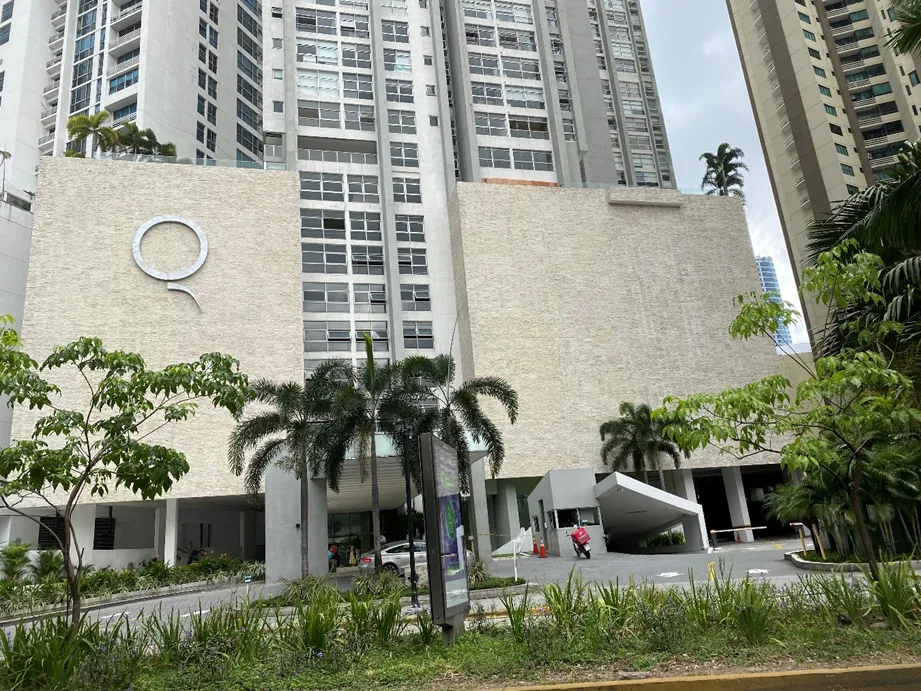
La arquitectura de Panamá está ligada a la frase que identifica al país: “Panamá, crisol”. Al igual que muchas de las ciudades latinoamericanas, Panamá es la confluencia de una hermosa mezcla de ricas y diferentes culturas como la indígena, la española, la asiática, la americana y la africana, que dejaron su huella en el hombre panameño de hoy, y marcaron la forma en que se han construido las ciudades y edificios y, por tanto, significan la evolución que ha sufrido la arquitectura en estos lares.
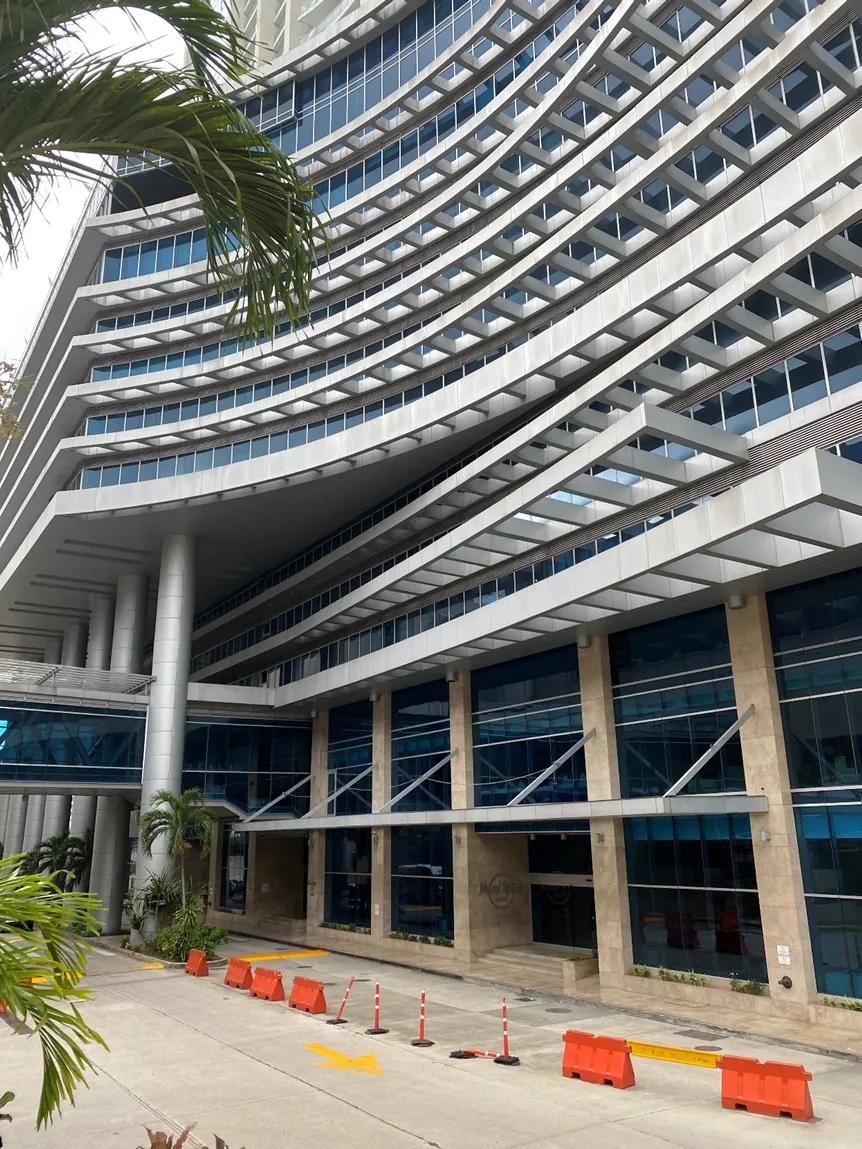
Esta “tercera ciudad” está localizada en la hermosa bahía de la Ciudad de Panamá, caracterizada por el auge comercial y la construcción de infraestructuras muy modernas y espectaculares, donde se desarrolla una vida nocturna típica del caribe, con magníficos restaurantes, zonas residenciales de lujo y el singular bosque tropical, llamado “Parque Natural Metropolitano”, una selva tropical en medio de ciudad. Esta sección de la urbe es una particular combinación de lo moderno con lo internacional y lo latino.
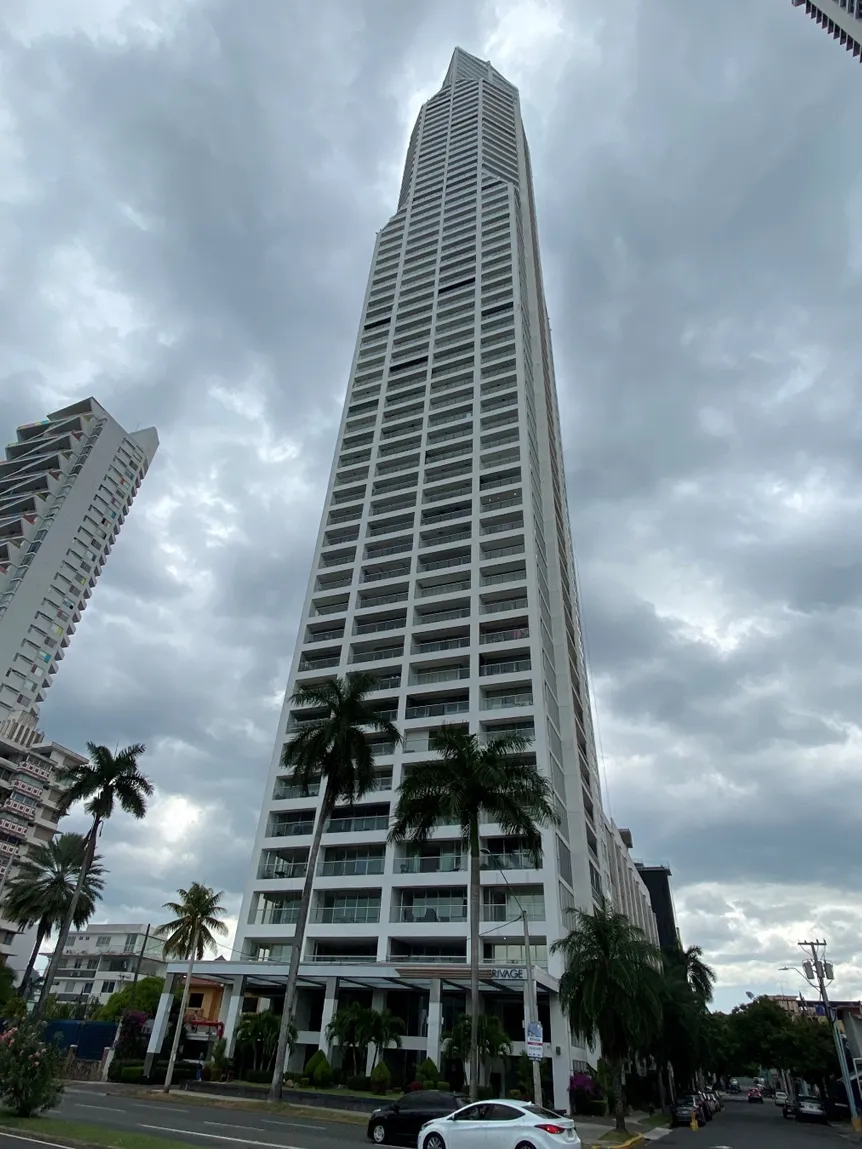
El desarrollo comercial de Panamá, con el único canal que une dos océanos y sirve de tráfico marítimo para embarcaciones de buena parte del mundo, ha servido para que La Bahía se convirtiera en un centro de atención de grandes empresas internacionales a fin de edificar una zona propicia para facilitar los negocios de la región.
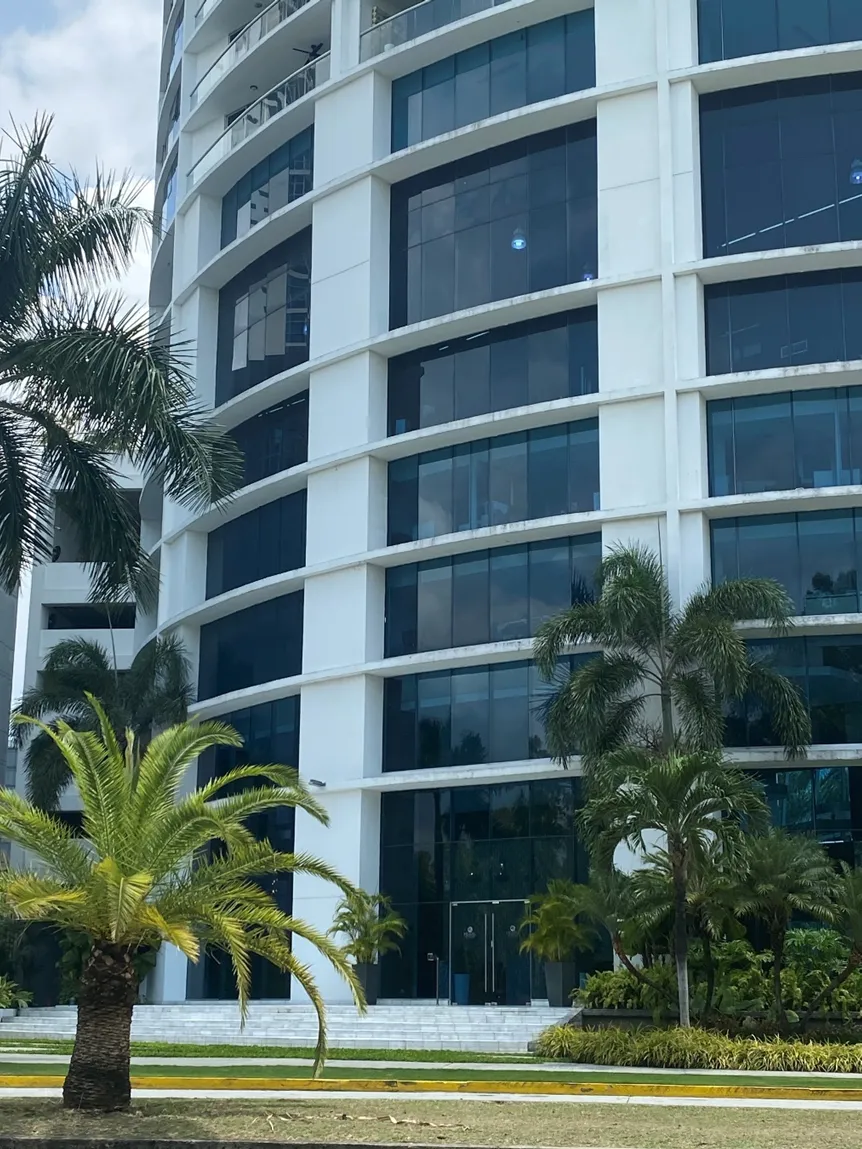
A simple vista, resulta imposible calcular el número de rascacielos que se levantan airosos en la llamada Panamá moderna. El visitante desprevenido no se imaginaba que en Centro América se encontraría una ciudad que pareciera más bien del medio oriente. Una muestra de lo que han construido en la moderna Panamá la representan algunos rascacielos de vidrio polarizado, algo que para muchos conocedores de la arquitectura es una "contradicción" en un país de temperaturas promedio que rondan los 30 grados Celsius y niveles de humedad de 80 % típicos de un clima tropical, por lo que se hace imperioso usar aire acondicionado en este tipo de construcciones.
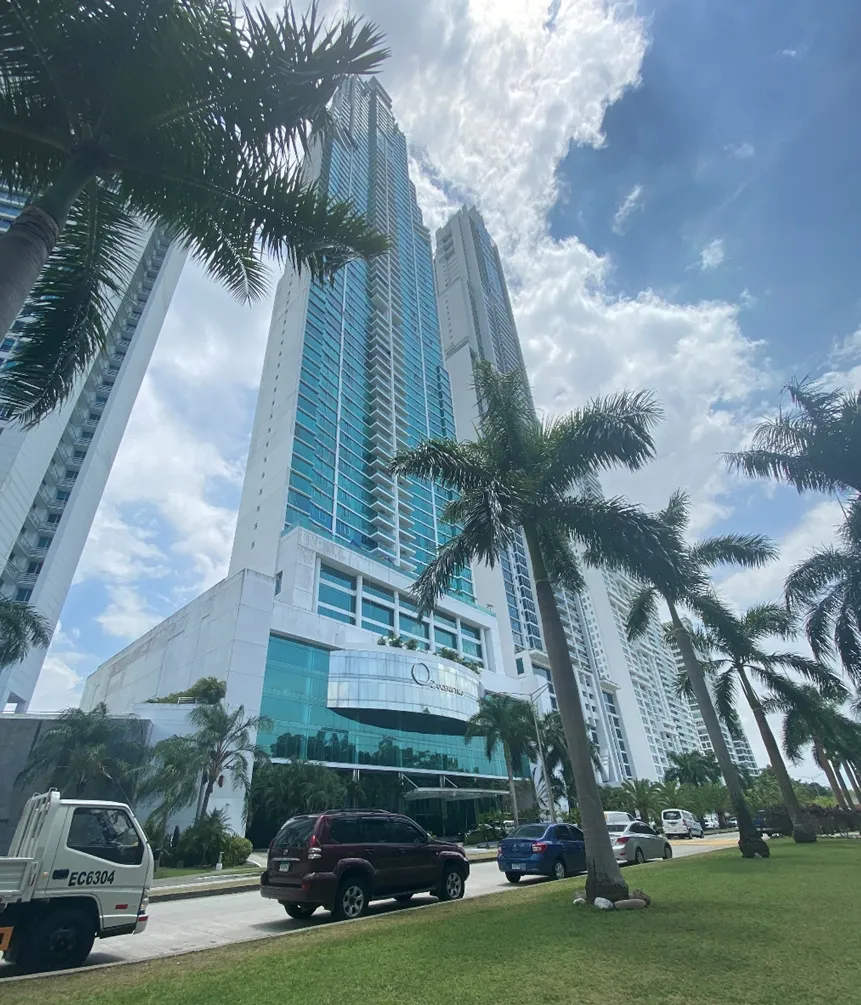
A inicios de este siglo, se empezaron a construir edificios de gran altura. En el 2011 se terminó de construir el Trump Ocean Club International Hotel & Tower, con 284 m y 70 pisos, rebautizado como “Bahia Gran Panamá”, el cual es, hasta ahora, el edificio más alto del país, con su forma de velero, o la torre F&F que tiene la forma de tornillo, la Torre Vitri de 275 metros de uso residencial, el Star Bay Tower con 267 metros, el edificio The Point con 266 metros y el Towerbank Financial Center, un edificio destinado a oficinas con 255 metros. Todas estas modernas estructuras son construidas en la actualidad bajo los más altos estándares de sismorresistencia y materiales como hormigón armado, aluminio, vidrios polarizados y acero.
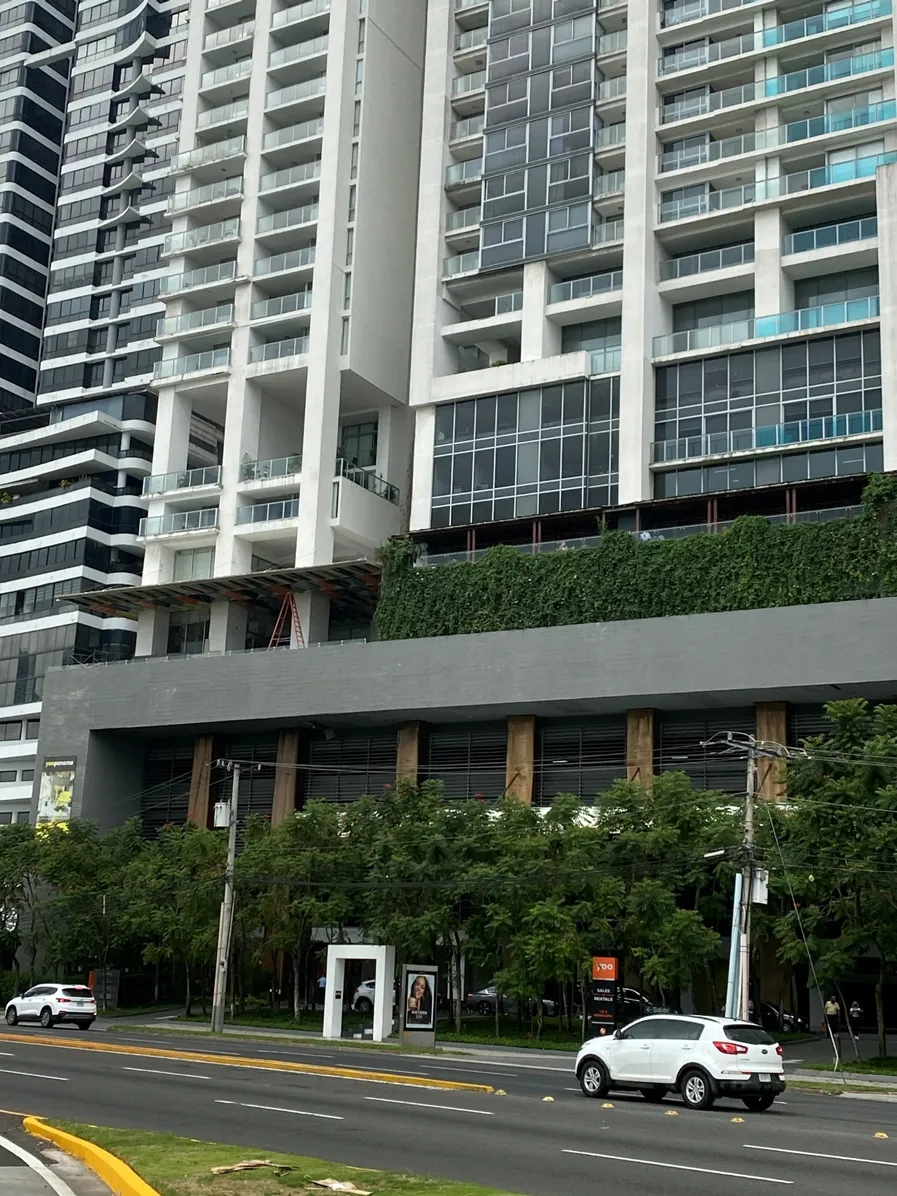
Empero, al lado de estos edificios que literalmente “rascan los cielos”, encontramos otros tipos de construcciones, representativas de diversas corrientes de la arquitectura, como la Iglesia Nuestra Señora del Carmen, una arquitectura religiosa de finos y bellos acabados. Además, si se quiere ver otras estructuras muy diferentes muy cerca está la ciudad vieja o colonial donde hay muchas edificaciones pequeñas que usan la ventilación cruzada y así aprovechan las corrientes de aire que hay en la zona, amén de la cantidad de balcones en viviendas familiares, edificios gubernamentales, pequeños hoteles y negocios.
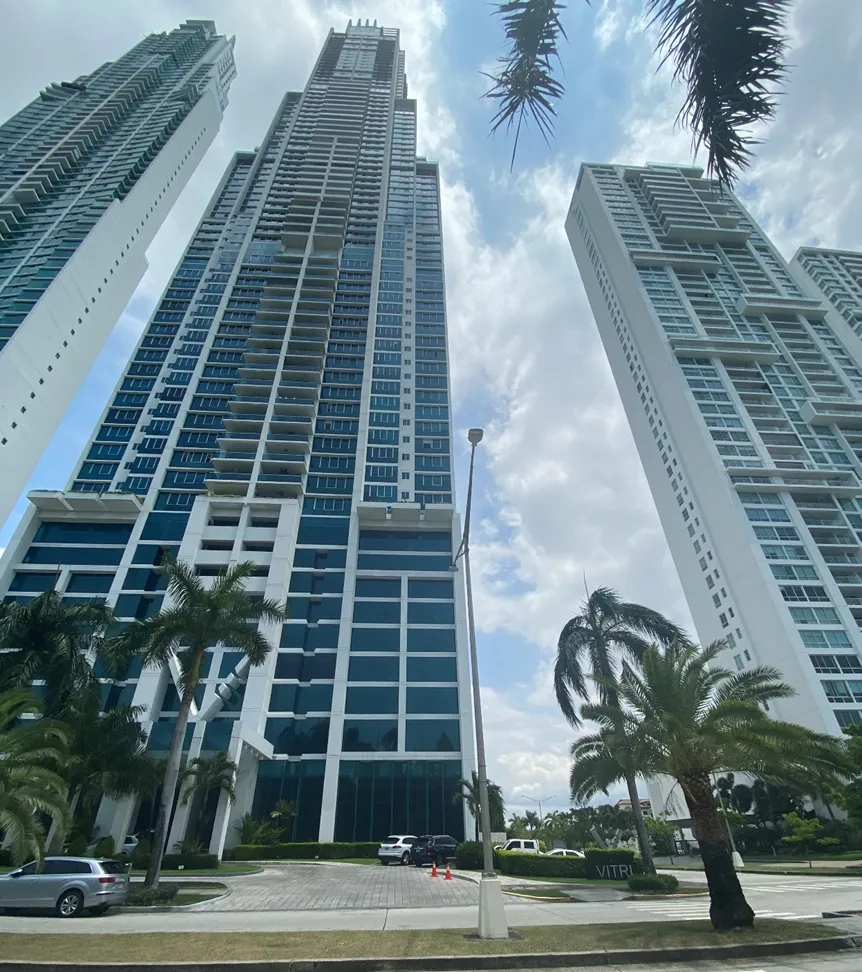
Para apreciar toda esta parte de la ciudad, no hay mejor camino que “La Cinta Costera”, un enorme espacio público de 25 hectáreas de terreno frente al mar, cuya construcción se inició en 2007 a cargo de los arquitectos y paisajistas panameños Boris Aguilar y Alberto Arosemena.
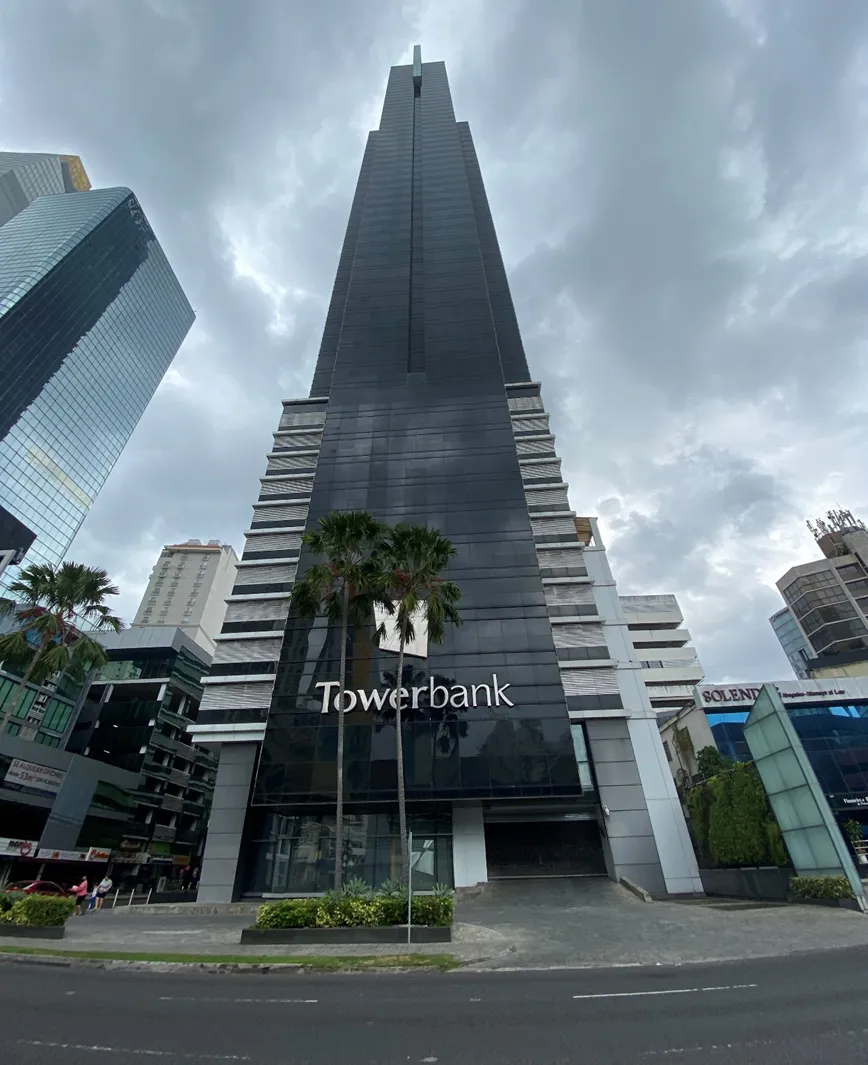
Para terminar, quisiera señalar que el increíble Museo de la Biodiversidad es otra obra arquitectónica de vanguardia, ubicada en esta parte de la ciudad, con una estética interesante, el cual presentaremos próximamente en un post aparte.
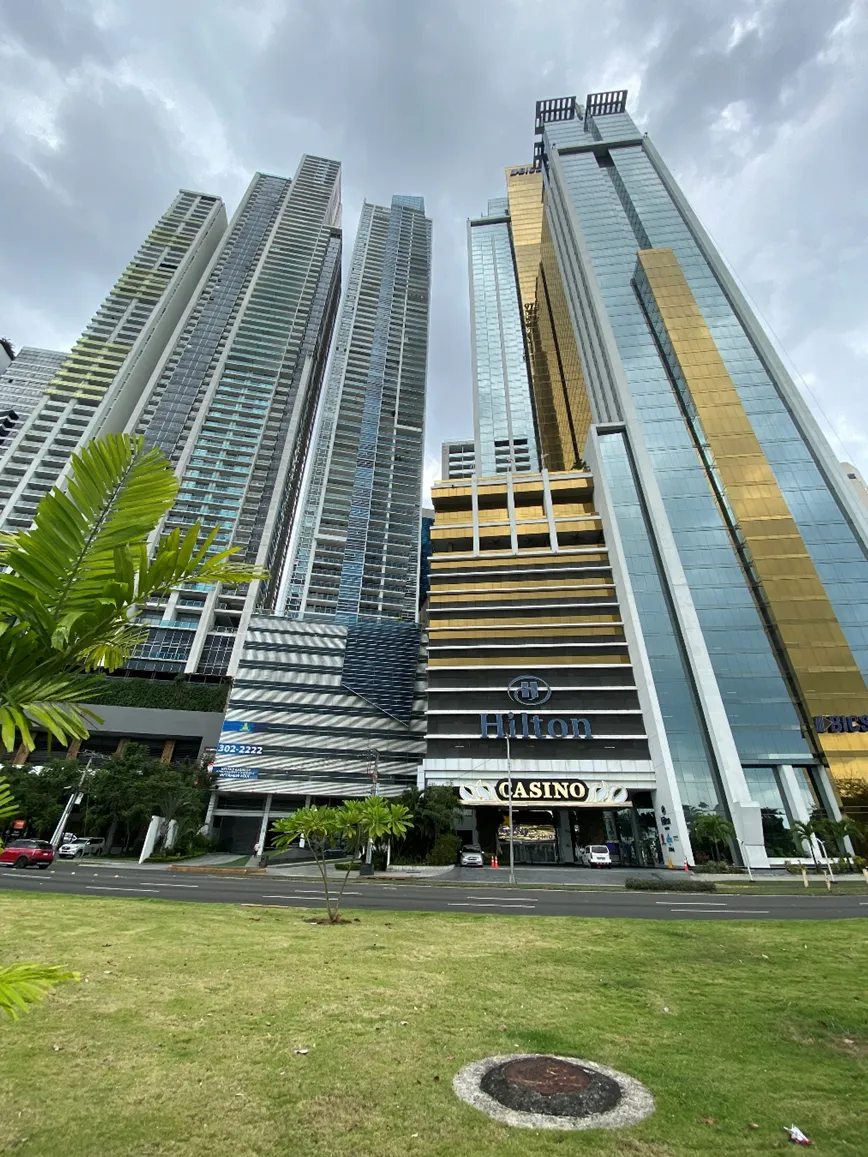
Bibliografía consultada:
*https://www.efe.com/efe/america/cultura/la-contradictoria-arquitectura-moderna-de-panama/20000009-4242533
